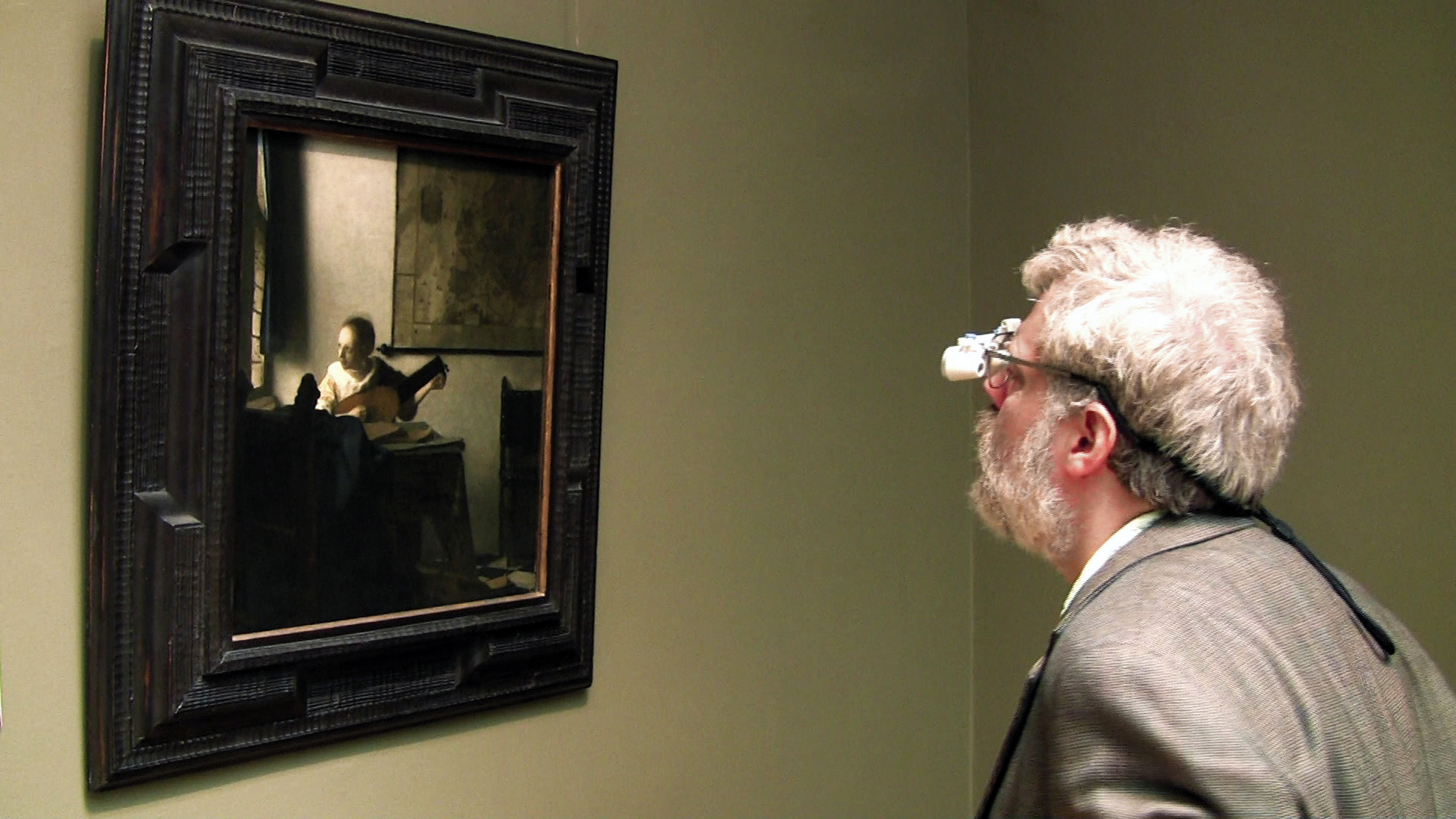Tim’s Vermeer
Opens Fri., March 7 at Sundance and Lincoln Square. Rated PG-13. 80 minutes.
How did Vermeer do it? This question is apparently important to some people, including a Texas millionaire named Tim Jenison, the founder of NewTek. Jenison decided to prove that the 17th-century Dutch master must’ve had help from special lenses and mathematical devices to create his luminous canvases, so he sets out to replicate the hypothetical methods by which Vermeer might have turned the trick.
The word “trick” is key here, for Tim’s Vermeer is by magicians Penn and Teller (offscreen friends of Jenison). Teller directs, and Penn Jillette acts as producer and—of course—garrulous narrator. Entertainingly, the movie tracks the months Jenison spent on his quest: first researching Vermeer’s techniques, then sitting down to try to paint a Vermeer. He arranges a room with vintage bric-a-brac and northern light; he creates the kinds of paint that Vermeer would have used in the 1600s; he grinds the kind of lenses he thinks Vermeer might have employed to enable his paintings’ near-photographic precision. Jenison’s geekiness is likable, and he makes an affable companion for this process. (He admits at one point that the job is so painstaking he probably would have given up if not for the documentary being made.)
The film’s premise isn’t revolutionary—more than a decade ago, David Hockney popularized the idea that some of the great realist painters must have used a camera obscura or other optical devices to achieve their uncanny masterpieces. (Hockney appears in the film, intrigued by Jenison’s new wrinkle.) Tim’s Vermeer has the same attitude, as though Penn and Teller—sleight-of-hand artists to the core—need to expose Vermeer’s cheat. Magicians, of all people, know there’s no actual magic, just the execution of a trick. So of course Penn and Teller would be flummoxed by genius. This kind of historical inquiry is interesting, but the impetus behind it feels a little like the persistent efforts to demonstrate that Shakespeare didn’t write the works of Shakespeare. There’s something undemocratic about the idea of genius, so the debunkers must disprove the romantic idea of the artist holding his thumb in front of his eye and miraculously solving the problems of perspective and light.
When Jenison finishes his meticulous task, what he has is a trick. It’s a pretty object, cleverly executed—but it isn’t a Vermeer.
film@seattleweekly.com







